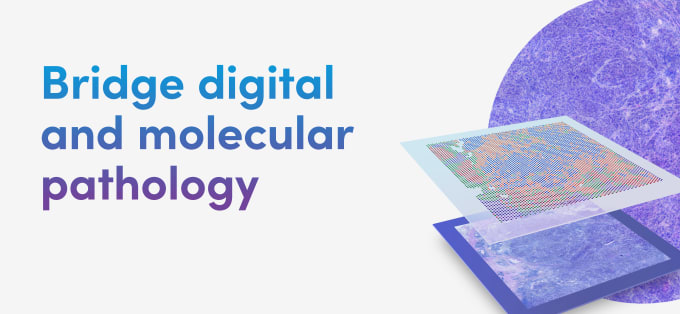AMP 2020 Workshop: Pathological insights into virus-associated cancers
Researchers are resolving tumor heterogeneity and the influence of morphological context on cancer progression with the enhanced pathological insights provided by Visium Spatial solutions. Explore a study of human papillomavirus–associated oropharyngeal cancer with Dr. Joseph Powell, Associate Professor at the Garvan Institute of Medical Research, in our AMP 2020 Workshop, now available on-demand.

There are many factors that can contribute to the development of cancer. Head and neck cancers, in particular, are often connected to external behaviors, such as smoking, alcohol consumption, and poor nutrition, with patient prognosis varying in response to the initial cause. However, a significant portion of head and neck cancers are further complicated by another factor: viral infection. In a recent presentation at AMP 2020, attendees got the chance to hear about some of the latest in pathology research from Dr. Joseph Powell, Associate Professor at the Garvan Institute of Medical Research, who discussed his study of human papillomavirus–associated oropharyngeal cancer.
It’s estimated that human papilloma virus (HPV) causes 70% of oropharyngeal cancers in the United States, but the molecular mechanisms underlying these diagnoses are not well understood. On a genetic level, HPV-associated head and neck cancers differ greatly from those found in HPV-negative patients, and one of the most challenging aspects of studying and treating HPV-associated cancers is the vast intratumor and tumor microenvironment diversity observed in them. Because of this cellular heterogeneity, scientists have struggled to decipher how HPV elicits specific molecular processes that contribute to cancer and what those processes are, but Dr. Powell and his team are taking a new approach. In addition to asking how and what, they’re asking where. Is there a functional relationship between physical location and expression?
Combining single cell gene expression and Visium Spatial technologies, the researchers studied samples from the primary cancer sites and, when possible, metastases in the lymph nodes of HPV-positive oropharyngeal cancer patients. Dr. Powell described how single cell RNA-seq allowed them to profile individual cells and reveal transcriptional variation among cell subpopulations in a tumor. He then walked us through the team’s use of Visium Spatial Gene Expression to map transcriptional expression to specific locations within a tumor sample, identifying and physically situating specific HPV-infected tumor cells. As a result, they can now begin examining relationships between cellular subpopulations and how they might be influenced by morphological context.
Learn more about how Dr. Powell and his team are building a framework to better understand virus-associated cancers, and how this research could inform future treatments and clinical strategies, in his on-demand presentation. Watch the AMP 2020 10x Genomics Workshop now →
